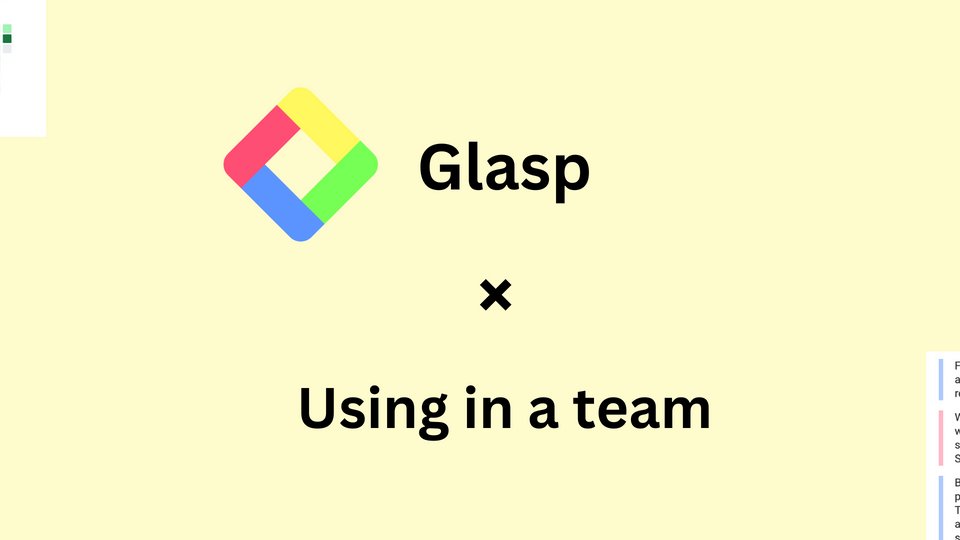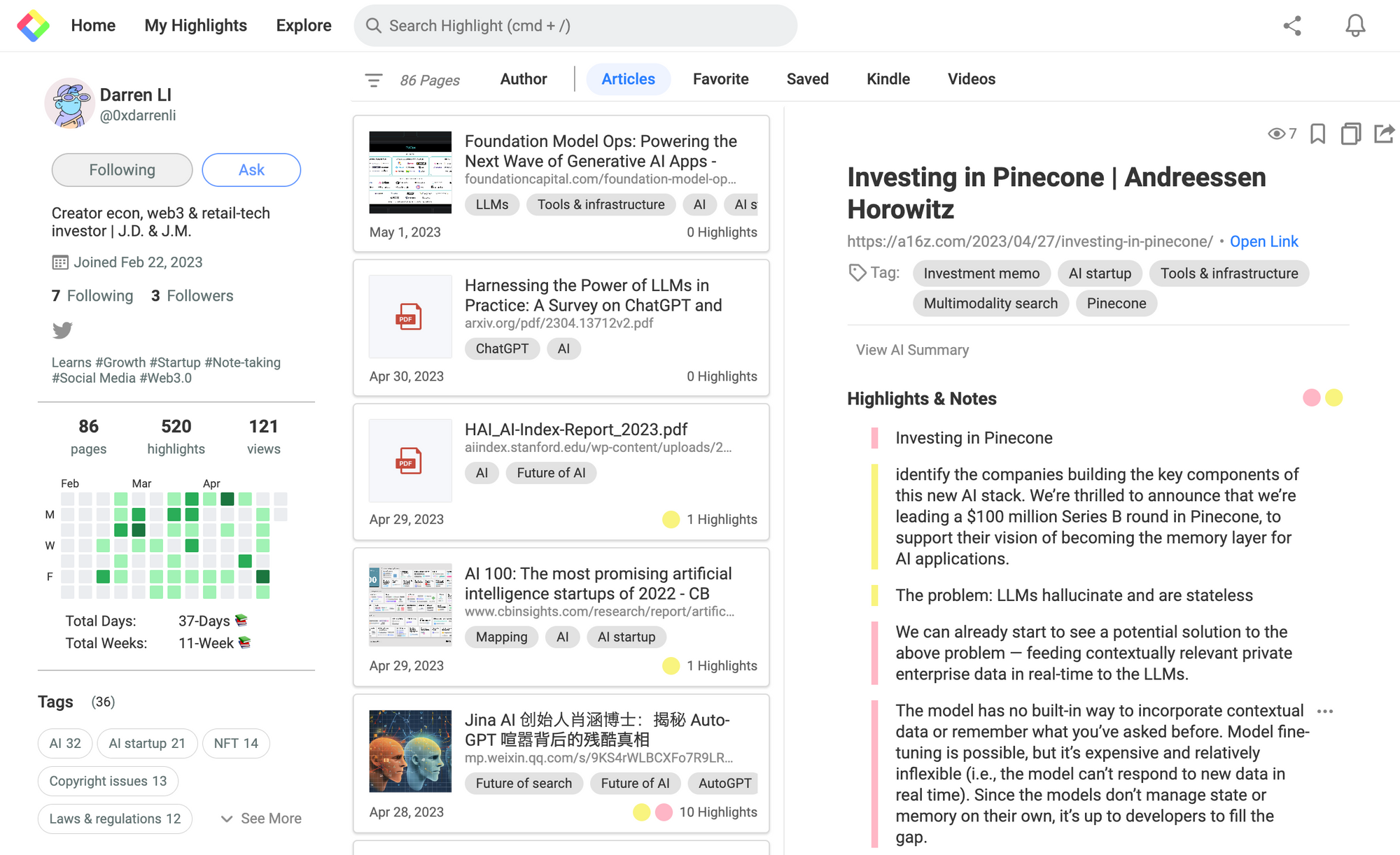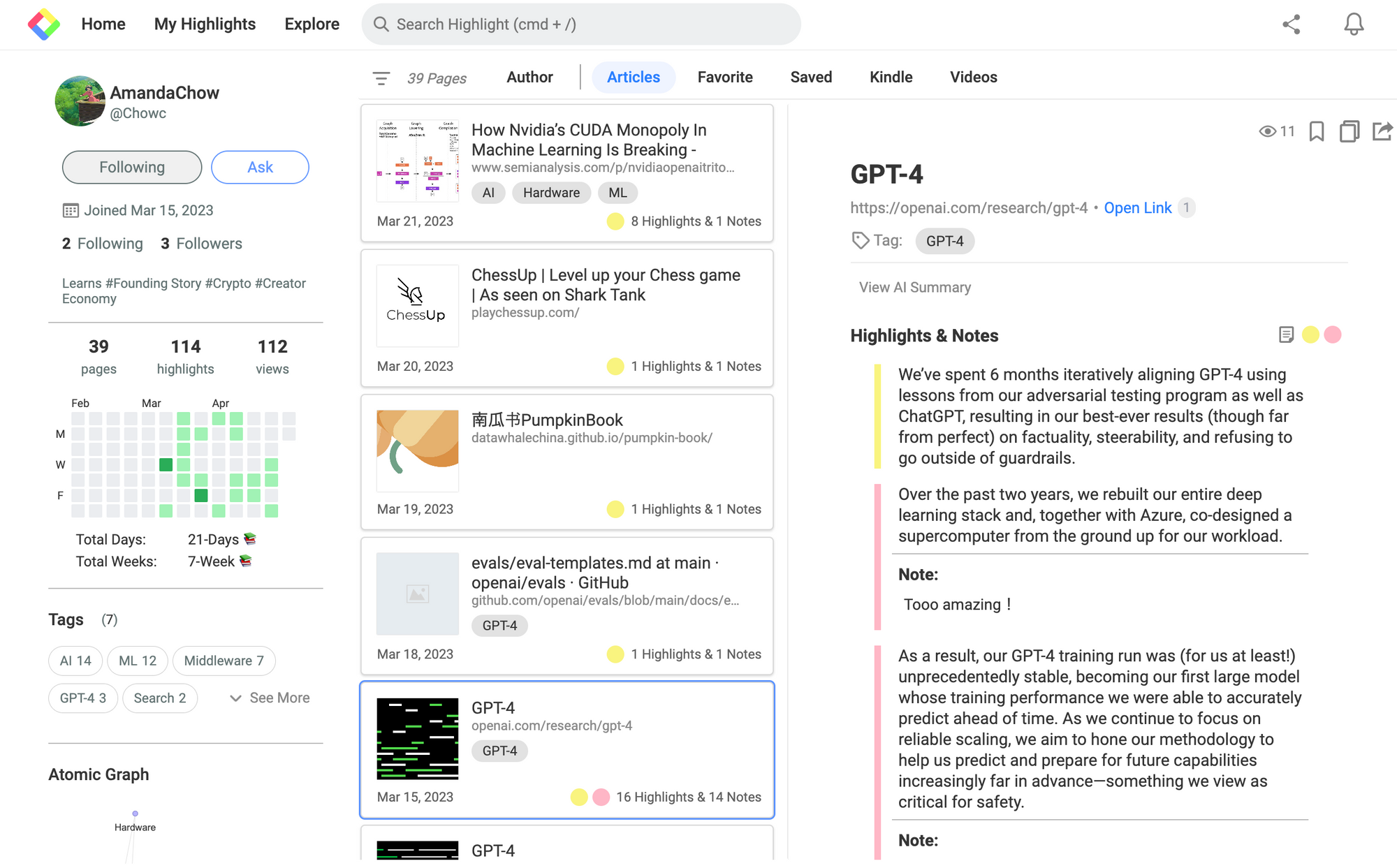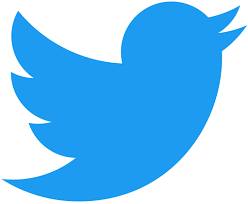How to use Glasp in a team with Darren and Amanda

Thankfully, we get a lot of feedback from our learners. Much of the feedback is insightful and helpful for us to improve and build Glasp. Today, we talked to Darren and Amanda, an angel investor and venture capitalist. Let’s take a look at their use case and workflow together. They will give us a lot of insights to improve our learning system.
What you will learn in this article
- Use Case of Glasp
- Value of Glasp
- Before Glasp - Problems
- Appendix
Background
Darren and Amanda live in Shanghai, China. They are angel investors and work in the same team. They're reading articles about web3 and generative AI. They use Glasp to highlight articles and see what they're reading each other. In the workspace, they share articles through WeChat and take notes on Notion.
• Glasp (highlight + content discovery)
• Startupy (content discovery)
• Notion (collaboration & note-taking)

Use Case of Glasp
Glasp: Thank you for having a chance to talk to us! Firstly, could you tell us when and how you use Glasp?
Darren: Sure. I skim through documents before start reading. And if they're related to my work, I highlight them with Glasp. There are many of generative AI content these days, so I'm checking if I cover everything that I need to catch up. I look back at it when I'd like to remember what I've learned. Also, I often use the YouTube Summary powered by ChatGPT to see YouTube videos about generative AI.
Amanda: I use Glasp to highlight important parts of the article while exploring content online. I look at Darren's My Highlights page to see what articles he's reading. As generative AI has been a hot topic recently, it's important to catch up on what's going on. Darren and I work in the same team, so we discuss hot topics. Looking at his profile page on Glasp helps us start talking about the topic immediately.
Glasp: Thanks. Could you tell us your general content discovery flow? Do you find the content you want to read from newsletters, Twitter, Linkedin, Google, or any resources?
Darren: To find content to read, I use Startupy, a platform known for its high-quality content. I also use Twitter, Substack, and other newsletters to discover articles. I often listen to podcasts and Twitter Space for web3 information.
Amanda: I use the same tools. And we see Glasp profile pages on each other. Also, when we find an interesting article to share, we use WeChat. It's a common thing to use WeChat in the workspace.
Value of Glasp
Glasp: I see. What would make you use Glasp?
Darren: I think Glasp is more like a tool or software, a note-taking tool. It's to the point. I read a lot of articles every day and I'd like to take notes when I'm reading. Glasp doesn't disturb my reading experience, so it's great. Also, I can see only the important points of the article when I go to my profile page.
Amanda: I use Glasp to keep what I read. And I see other people’s thoughts. It’s useful. I always check if others have the same opinion as me about AI content. Interestingly, I find Kazuki whenever I highlight AI articles. It convinces me that it's a good article. Also, I see what he thinks.

Before Glasp - Problems
Glasp: It's great that we can share knowledge with like-minds. Did you use any tools before Glasp, or are you using any tools with Glasp now?
Darren: We used to use Notion to curate content for work. We used Notion Web Clipper to curate and save content. But we never read the content that we curated. They have too much content. It was not an efficient way. We have been using Notion to take notes together in the team recently.
Amanda: I used to use Hypothes.is, but I didn't like yellow. I like the 4 colors in Glasp. When I read a book, I use four color of highlighter, too. It's been a habit since I was a high school student. So, I didn't want to change my custom. And it's effective if I highlight four colors. I can grasp the content at a glance.
Glasp: Thank you for sharing your feedback. Do you have anything you want Glasp to improve?
Darren: Two things. Firstly, it's great if it supports multi-modality. I can highlight text only now. But I want to curate images such as industry mapping. When I do research, pictures are more helpful than text. The second one is the Ask Digital Me feature. It looks interesting, but I haven't had any chance to dig into it. I'm not sure how to use it effectively. Also, it’s not much effective for limited numbers of highlights.
Amanda: I also share two things. The first one is a mobile app. I often read articles on mobile, but I cannot highlight articles on mobile. So, I'd like it. Secondly, it'd be nice if Glasp would have a private mode for highlights. I'm happy to share my learnings, but sometimes, I'm not ready to share my learnings with the public.
Glasp: Got it. We will develop and improve them. Thank you for taking the time and for your feedback!
Darren & Amanda: Sure.
Appendix
In this use case interview, Darren and Amanda introduced how they use Glasp in the team together. It’s interesting to see their workflow and share their learnings. One of the advantages of Glasp is its social aspect which lets you share and learn from others. It showcases that Glasp has a good fit when used in a team.
More about Darren and Amanda
- Darren's Glasp: https://glasp.co/#/0xdarrenli
- Darren's Twitter: https://twitter.com/darrenlijc
- Amanda's Glasp: https://glasp.co/#/Chowc
Follow Glasp to see more
—
